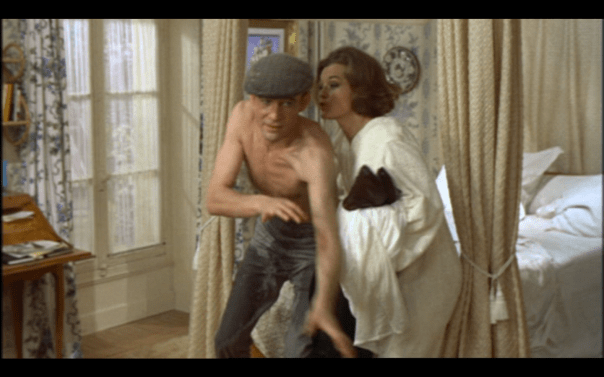
Coarse, stupid, vulgar: What’s New Pussycat is a film that speaks its time — a culture on the cusp of a sexual revolution made possible by easily available contraception — and vomits up the most misogynist aspects of it. The film gets its title from Warren Beatty’s customary greeting to the women who phoned him. Beatty was initially set to play the protagonist, Michael James, a playboy in love with his girlfriend but unable to resist the lure of other women and seeking help for this from a psychiatrist (a role initially set for Groucho Marx but here played by Peter Sellers) who’s got problems of his own.

In his brilliant biography of Beatty, Star: How Warren Beatty Seduced America, Peter Biskind writes of how Beatty had three reservations about the project as it was being developed: Woody Allen, who was writing the film, kept enlarging his part, initially just a few lines, at the expense of the protagonist’s; the casting of Capucine, who was then producer Charles K. Feldman’s girlfriend; and lastly, in his own words, that ‘My character had turned into some neo-Nazi Ubermensch who was unkind to women’.

Beatty threatened to walk out of the project unless these problems were resolved. Feldman, who was Beatty’s great friend and mentor, shocked him by using Beatty’s threat as an opportunity to re-cast in favour of Peter O’Toole, fresh from Lawrence of Arabia and Becket and then much bigger box-office. But Beatty was right: Woody Allen’s part adds nothing to the story; Capucine is beautiful to look at but painful to watch; and the character of Michael James, even as played by Peter O’Toole, is indeed unkind to women, though not as hatefully as the film itself.

The women in the film aren’t people, they’re dolls, some of them barely sentient, designed to fulfill different male fears or desires: there’s the fat Brünhilde (Edra Gale) who sings Wagner as she charges after her husband, Dr. Fritz Fassbender (Peter Sellers); the frigid ‘poetess’ who’s a virgin but only on one side of the Atlantic (Paula Prentiss, redeemed by her expressive low voice, a hoarseness that expresses more humanity than any of the shit she’s made to utter); the nympho with sadistic impulses (Capucine); the dangerous dream with leopard-skin mittens and a shark-skin body-suit who parachutes right onto the hero’s 1936-7 Singer 9 Le Mans racing car (Ursula Andress); and the lusciously pretty hausfrau girlfriend, who suffers, waits, and thinks only of getting a fixed date for her wedding (Romy Schneider, who against all odds, succeeds in making her character into a human being).

Peter Sellers gets top billing but is an unfunny blank. A young, even boyish, Woody Allen, whose film debut this is, does his usual lascivious schtick. These two comic ‘geniuses’ can barely get a laugh between them, and certainly not one that doesn’t make at least this viewer feel diminished as a human being. The film is more in love with Peter O’Toole’s blue eyes than it is with any of its female stars. We’re meant to find him adorable even when he takes his shirt off to reveal a chest that is both droopy and scrawny or when he dances like a shaky stick howling at the moon begging for rhythm. O’Toole, however, also brings a lovely stillness juxtaposed with bursts of theatricality that both centres and sparks the film and makes it bearable.

What’s Up Pussycat? was a top-ten box-office success in 1965, the year that The Sound of Music topped the list. Although it is set in France, it very much evokes the look and attitudes of ‘Swinging London’ not only in its inventive visuals (the animated sequence at the beginning) but also formally (the self-reflexive pop elements of the speech purporting to be a vehicle for the author’s thought indicated through a flashing title; the dream sequence). Today it is probably best remembered for Tom Jones’s singing of the title tune. Fans of the Bacharach-David songbook will also enjoy an early version of ‘Little Red Book’ and the great Dionne Warwick singing ‘Here I Am’. Pop fans of the period may also delight in seeing Françoise Hardy crop up as the Mayor’s assistant. Those interested in film history might also see in this producer’s package an early antecedent to the Simpson-Bruckheimer High Concept cinema of the 1980.
In spite of the above, it is very difficult to see What’s Up Pussycat? today except as an exercise in a male privilege so entrenched it is oblivious to its own ugliness.
José Arroyo
Great post. I completely agree with you. You are a good writer. I have a film blog. I tend to write about things that no one has heard of.
Thanks. Great appreciated. I shall look for your blog which sounds very much like something I’d like.
Hi. Loved the review … and would like to discuss including it in a Guide to Woody Allen I’m developing. Please get back to me at john@take2publishing.com to discuss.